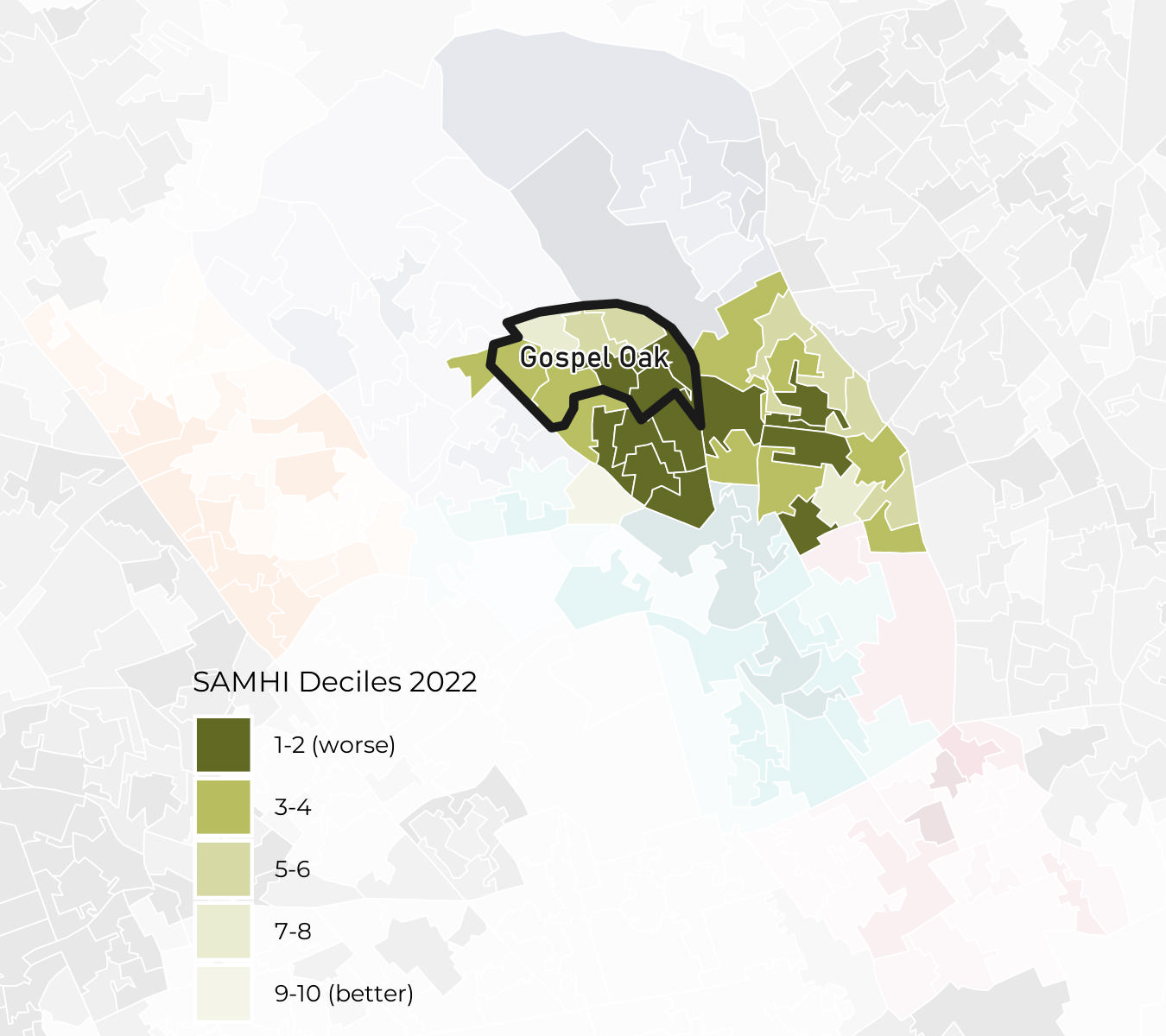Gospel Oak ward profile
A summary of Gospel Oak ward in the East neighbourhood of Camden
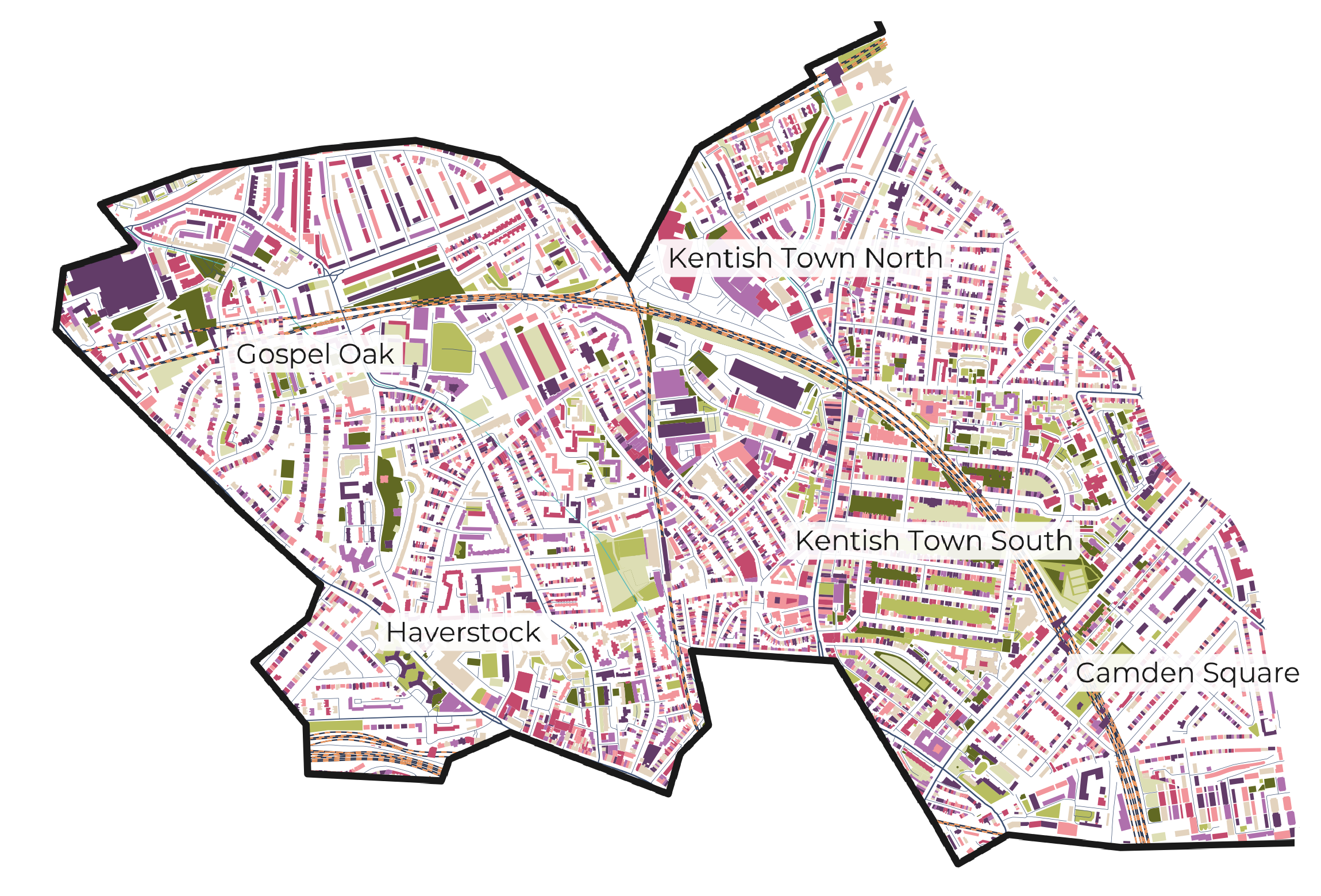
Introduction
This is a summary profile of Gospel Oak ward in the East neighbourhood of Camden. It includes data on the neighbourhood’s demography, levels of deprivation, and key health indicators such as life expectancy and prevalence of long-term conditions.
Demography
Population
The London Borough of Camden has approximately 219,900 residents according to the latest population projections. Of this total, 11,700 reside in Gospel Oak, making it the ward with the eleventh most number of residents. There are 6,400 female residents and 5,300 male residents in Gospel Oak.
Age
Children and young people (0-24 years old) make up 27.28% of the population of Gospel Oak which is less than Camden overall (30.85%). Additionally, the percentage of older adults aged 65+ years is 13.77% compared to 12.02%.
Ethnicity
The following data uses the Office of National Statistics (ONS) ethnicity classifications. When looking at the broader ethnicities (e.g. ‘Asian’ instead of ‘Asian: Indian’), the most frequently reported ethnicity in Gospel Oak is White (62.18%), which is higher than Camden (59.52%). Additionally, this ward exhibits higher proportions of residents identifying as Black.
Looking at the specific subgroups of ethnicity, Gospel Oak shows higher proportions of residents identifying as Bangladeshi, African, Any other ethnic group, Irish, Caribbean, White and Black Caribbean, Other Black, and Gypsy or Irish Traveller compared to the borough.
Wider Determinants of Health
Index of Multiple Deprivation
Gospel Oak ward has IMD deciles ranging from decile 2 to decile 8. Note that the least deprived decile is decile 10.
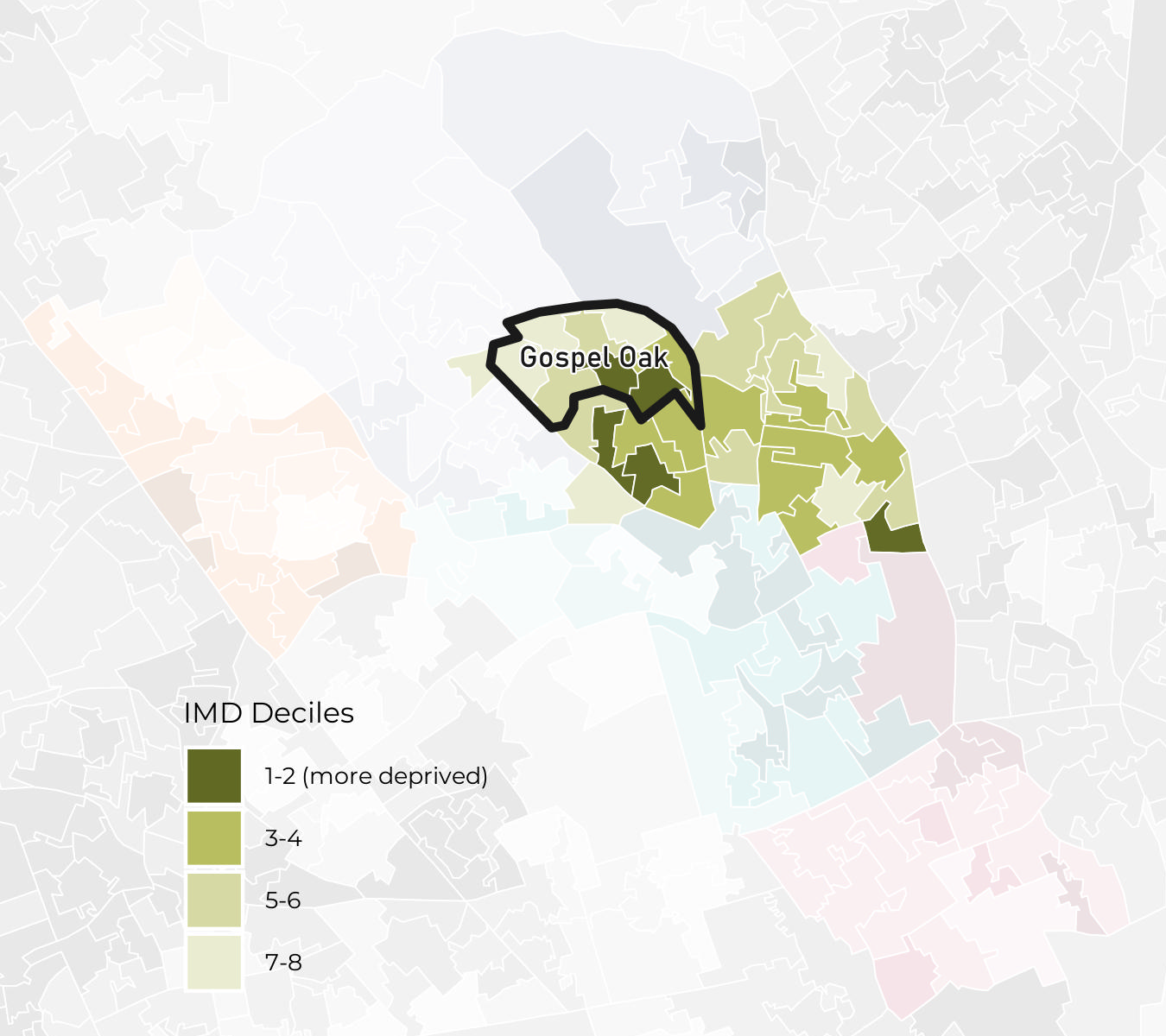
Gospel Oak ward has IDACI (Income Deprivation Affecting Children Index) deciles ranging from decile 1 to decile 7. Note that the least deprived decile is decile 10.

Gospel Oak ward has IDAOPI (Income Deprivation Affecting Older People Index) deciles ranging from decile 1 to decile 6. Note that the least deprived decile is decile 10.
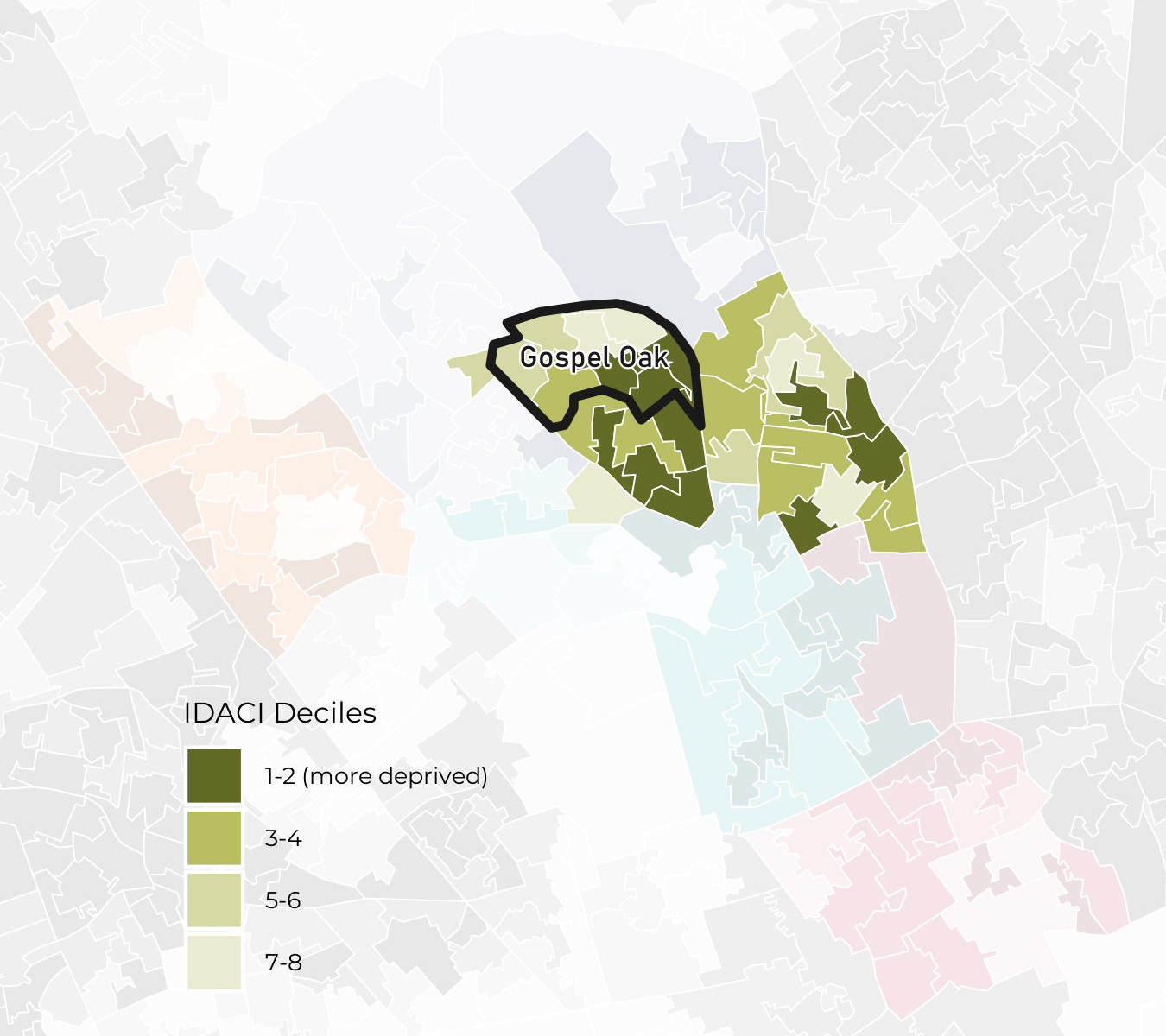
Environment
The place in which we live plays a key role in our health and wellbeing and is an important factor in the wider determinants of health. Access to green spaces and air quality indicators are presented below.
Most Lower Super Output Areas (LSOA) in Gospel Oak sit within Quintile 4 for access to green spaces and within Quintile 4 for air quality.
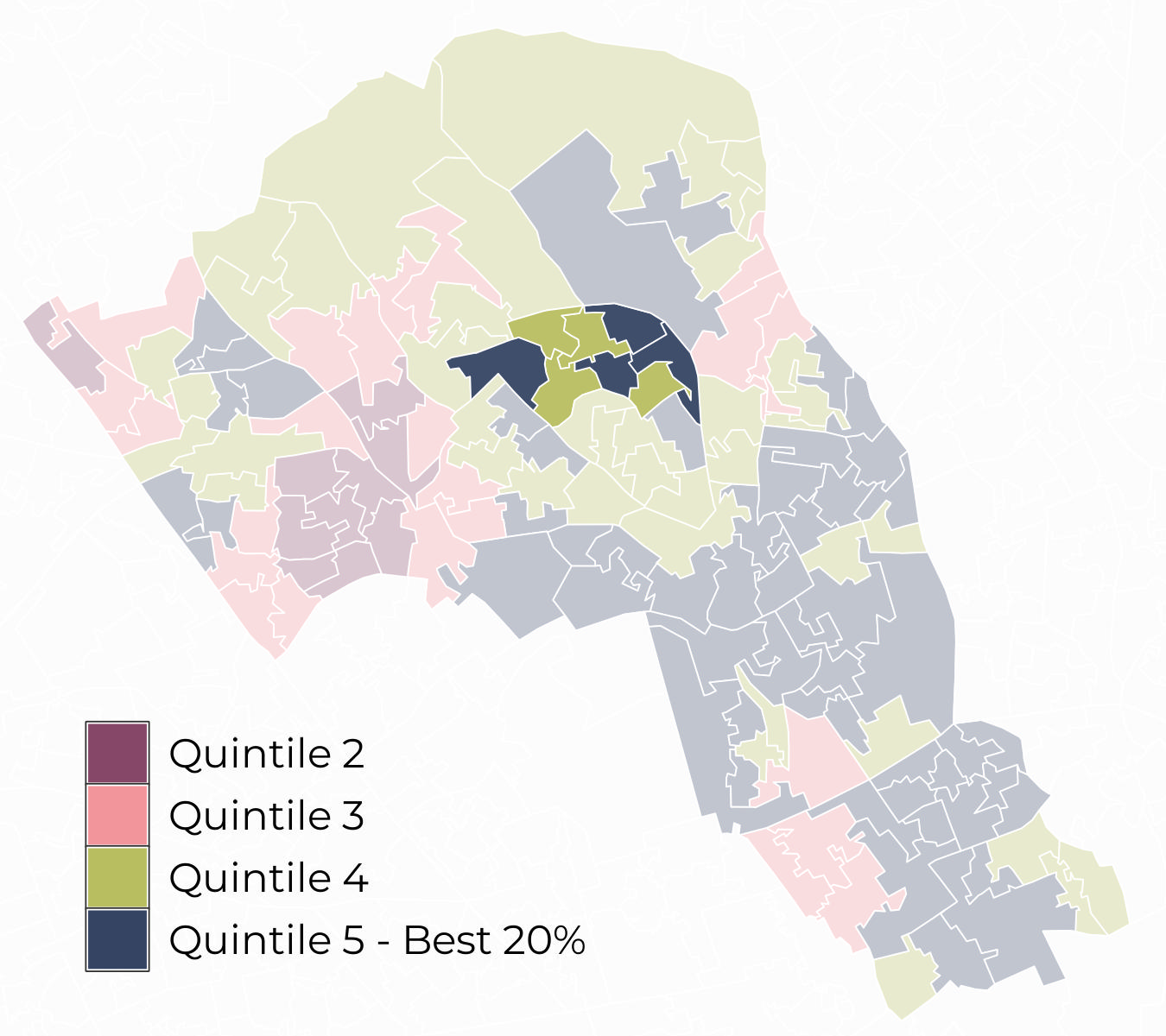
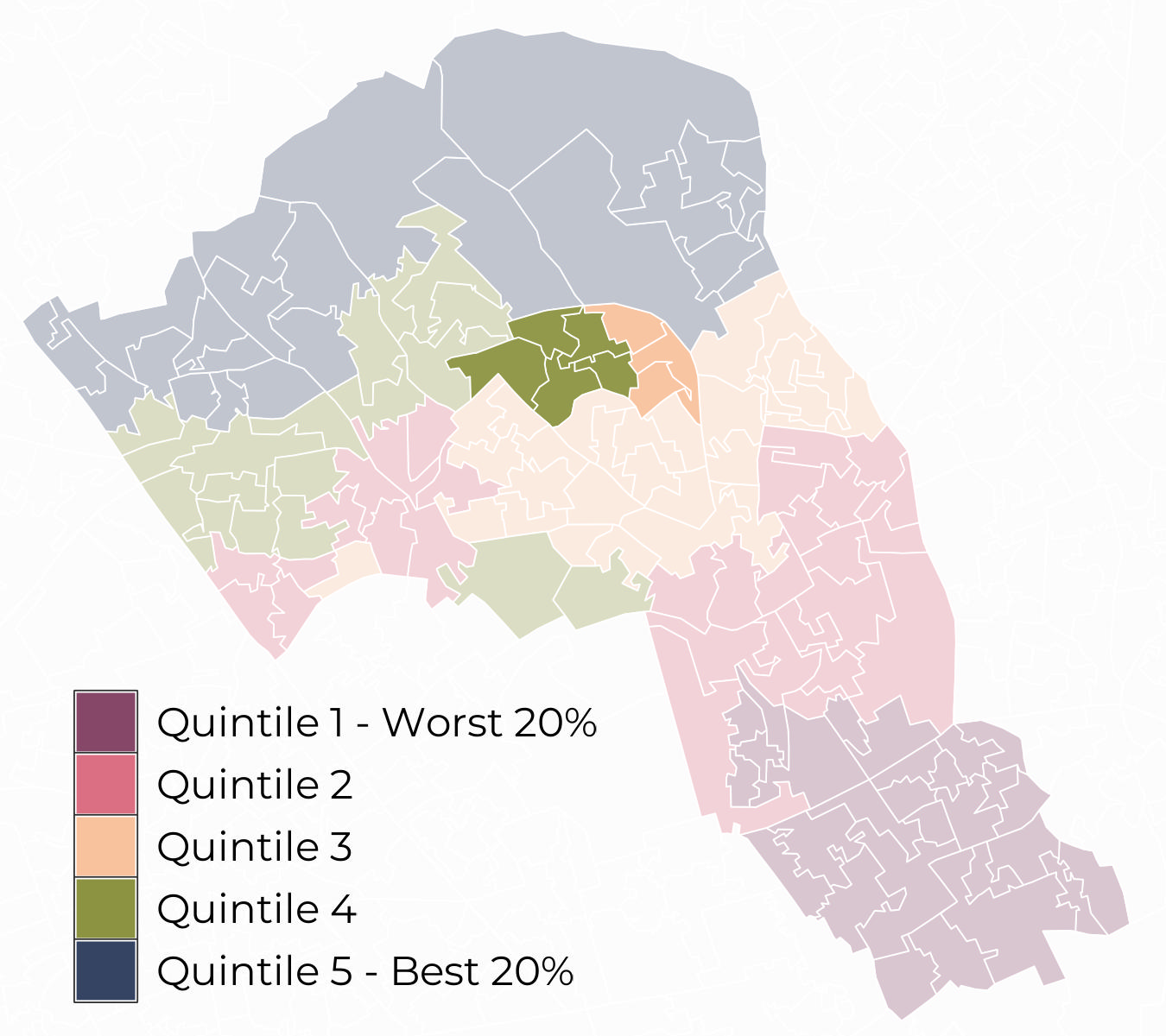
Behavioural risk factors and long-term conditions
Behavioural risk factors
The most prevalent behavioural risk factor in Gospel Oak is Obesity (18.05%). Gospel Oak has a statistically significant higher prevalence of Alcohol Abuse or Dependence, Smoking and Obesity compared to the rest of the borough.
Long-term conditions
The most prevalent long-term conditions in Gospel Oak are Depression (13.83%), Hypertension (12.22%), Asthma (5.1%), and Diabetes (4.65%). Gospel Oak has statistically significant higher prevalence of Asthma, Atrial Fibrillation, Cancer, Chronic Kidney Disease, Chronic Obstructive Pulmonary Disease, Dementia, Depression, Diabetes, Epilepsy, Heart Failure, Hypertension, Palliative Care, Serious Mental Illness, and Stroke and TIA compared to the rest of the borough.
Mental health
In addition to reporting the prevalence of depression and serious mental illness (SMI), the NIHR Small Area Mental Health Index (SAMHI) can be used to examine geographical variation in mental health-related indicators at the LSOA level within the area.
Gospel Oak ward has SAMHI deciles ranging from decile 1 to decile 7. Note that the best decile is decile 10.
